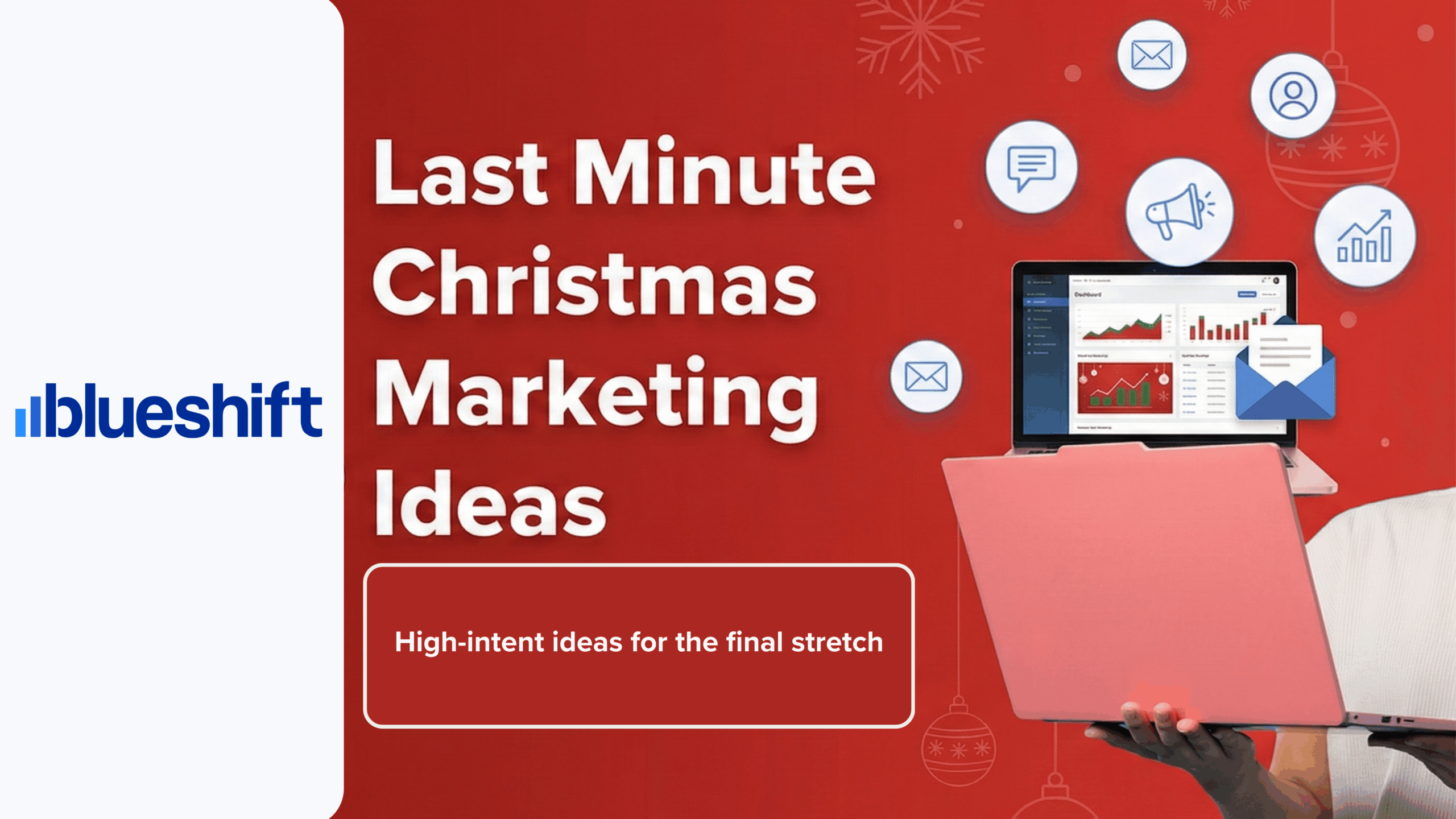The foundations of marketing programs and strategies are shifting, fundamentally causing retail marketers to rethink their customer engagement strategies: the demise of third-party cookies seems closer at hand, as the spiraling costs of paid media and a persistent and growing regulatory framework on data privacy loom overhead. And if that is not enough, economic conditions drive a growing need for performance and accountability. Sigh, can it get any more complicated?
From Chaos to Control: Transforming Retail Marketing with Data in a Disrupted World

Let’s Unpack These Disruptions
For years, third-party cookies have been the device to enable marketers to track user behavior across the web, tailor ads to specific interests, and measure campaign effectiveness. However, with major browsers phasing out support for these trackers, they are losing the ability to deliver personalized experiences at scale, creating the need for alternative strategies that comply with user expectations and privacy standards.
Simultaneously, their costs for paid media are driving upward. As competition intensifies, engaging customers through paid channels is becoming expensive, eroding margins and diminishing ROI.
Compounding these challenges is the global patchwork of regulations, such as the General Data Protection Regulation (GDPR) in the European Union and the California Consumer Privacy Act (CCPA) in the United States. These regulations significantly constrain how marketers collect, store, and use customer data and create a layer of complexity, making building a comprehensive approach to data management and customer engagement more challenging.
Overlaying these technological and regulatory disruptions are broader economic pressures that drive marketers to do more with less, creating an urgent need for strategies that not only comply with the new rules of engagement but also maximize both reach and impact within tighter budgetary constraints.
A New Path Through The Craziness
What if marketers flipped this paradigm? What if they owned their audience strategy? If they truly understand their audiences, they won’t rely on targeting and audience insights from walled-garden publishers like Google, Facebook, Instagram, and more. They would also deeply understand customer locations and find it easier to manage data discretely between geographically diverse privacy laws.
Leading industry analysts have been vocal about the critical importance of first-party data — “Effective B2C marketing depends on access to accurate, complete customer profiles. Market demand for B2C CDPs reflects Marketer’s recognition of the criticality of customer data, and the category is rapidly approaching mainstream adoption. Access to data not only supports standard marketing capabilities like customer insights and executing campaigns, but the value of data is increasing as sophisticated personalization strategies and access to new devices and touchpoints demand more and new types of data.” according to The Customer Data Platforms For B2C Landscape, Q1 2024 report by Forrester Research.
Emily: A Transformational Retail Marketer
For a retail marketer like Emily, each day is a balancing act. She wakes up early, armed with a fresh cup of coffee, ready to navigate a landscape marked by incessant transformations. The marketing strategies she once relied upon seem like relics of the past as she grapples with new realities: the imminent demise of third-party cookies, escalating costs of paid media, and a tightening regulatory framework on data privacy.
Emily logs into her dashboard and is immediately greeted with the latest analytics. The numbers show a decline in customer engagement. She can almost hear the ticking clock of her marketing campaigns—every second counts. The pressure is palpable, but so is her determination. The first item on her agenda? Identifying high-value customers. She knows that her best efforts must be directed where they will yield the highest returns.
Unified Customer Data: Precision in Targeting
Tapping into a unified customer data platform, Emily begins weaving data points from various channels. This isn’t just data; it’s a map that reveals where to find her most valuable customers. The platform integrates everything—from social media and mobile app interactions to transaction histories—offering a unified profile of each customer.
This capability enhances her segmentation, allowing her to channel her marketing efforts toward the customers most likely to engage and convert. She feels a renewed sense of control and direction as she adjusts her strategies based on these insights.
Predictive Analytics: Anticipating Customer Needs
Mid-morning, Emily delves into predictive analytics. It’s like having a crystal ball, showing her her customers’ future behaviors and preferences. She sees forecasts for customer lifetime value (LTV), purchase propensities, and churn risks.
Using these insights, Emily refines her marketing strategies, making informed decisions on which segments to focus on and which products to spotlight. Predictive models help her create highly personalized campaigns that resonate with individual customers’ needs and preferences, thus heightening their engagement and boosting conversions.
Personalized Marketing: Creating Impactful Connections
By noon, Emily shifts her attention to crafting personalized marketing messages. It’s not just about sending emails or pushing notifications; it’s about ensuring every interaction feels unique and relevant to the recipient and delivered at a time when they are most receptive. The comprehensive data profiles and predictive insights empower her to tailor each message precisely.
This personalized approach is instrumental in increasing engagement rates. Emily reviews the performance metrics from the last campaign and sees a noticeable uptick in open rates and conversions. Each communication step now feels more like a conversation and less like a broadcast.
Real-Time Engagement: Seizing the Moment
In the afternoon, Emily pivots to real-time engagement. This aspect is crucial—responding to customer behaviors as they happen. She sets up triggers for various actions, from cart abandonments to unique browsing patterns.
Real-time processing captures these moments, enabling Emily to engage customers instantly. Whether it’s sending a timely discount code or a friendly reminder of abandoned items, these immediacies significantly improve customer retention and satisfaction.
Continuous Learning and Optimization: Staying Ahead of the Curve
Emily analyzes the day’s data and feedback as the day winds down. She understands that marketing isn’t static; it’s a process of continuous learning and optimization. She refines her strategies by analyzing what worked and what didn’t, constantly iterating towards better performance.
The insights gathered help her tweak her campaigns for better results, maximizing every effort. This constant cycle of analysis and adjustment keeps her ahead of the curve.
The Tools that Boost Performance
While she doesn’t think much about the technology behind it all, Emily knows that her customer data platform’s advanced capabilities and predictive analytics tools are crucial to her success. These tools have become indispensable in today’s dynamic retail marketing environment.
Concluding Another Day
When she shuts down her computer, Emily feels a sense of accomplishment. It’s been a demanding day filled with challenges and rapid adaptations. Still, each task has been an opportunity to harness the power of advanced marketing tools to drive greater efficiency and effectiveness. As she reflects on the day, she knows that while the landscape of retail marketing is ever-changing, the foundation of her approach—rooted in data, personalized engagement, and real-time responsiveness—remains solid.
Blueshift Supports Retail Marketers Like Emily
From AI-driven personalization to cross-channel campaign management and stringent compliance capabilities, Blueshift is a powerful platform designed to solve modern marketing challenges. By enhancing customer engagement, optimizing marketing spend, and ensuring data privacy, Blueshift equips marketers with the tools necessary to win, even in a rapidly changing market.
Want to learn more about Emily and how Blueshift enables retail marketers like her to secure success in a tumultuous and changing environment—check out this Smart Guide to Data Activation and get your path to success started today!
Want to reduce your time-to-value?
Visit the Blueshift demo instances where you can familiarize yourself with some of Blueshift’s key features and functions before you even begin to onboard.


